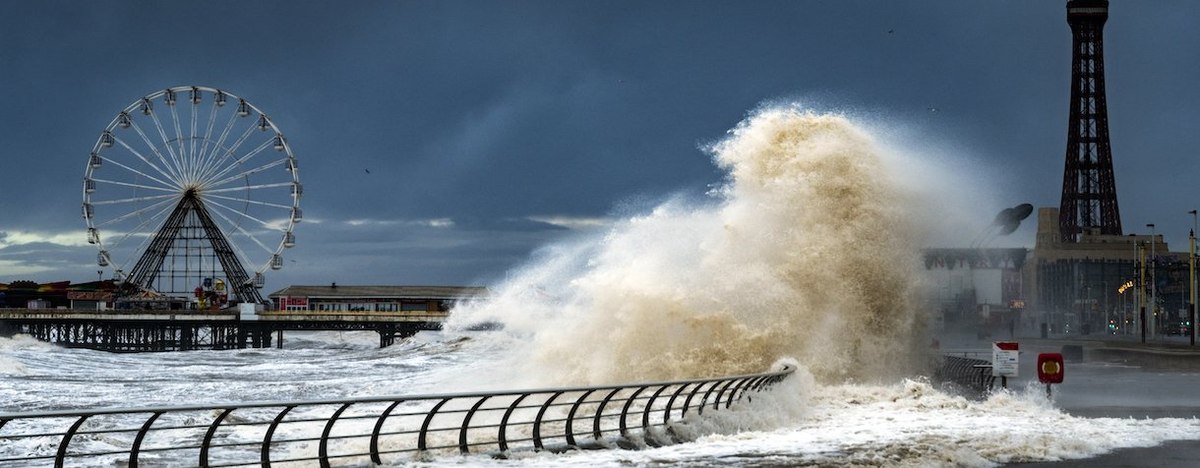This summer — which is estimated to have been the world's hottest on record — also coincided with a variety of catastrophic weather events: wildfires in Canada, flooding in Libya, and drought in regions across the world. Although it is only September, the United States already has experienced more weather disasters that have each led to at least $1 billion in damage in 2023 than in any prior year on record.
New polling by YouGov finds that most Americans believe the frequency and severity of certain types of extreme weather have increased — including wildfires, heat waves, floods, droughts, hurricanes, and tornadoes. Majorities who think each of these events has become more common or severe believe climate change is mostly or entirely responsible for the changes.
Changing weather patterns
To understand what Americans think about extreme weather patterns, our survey asked a randomly selected half of respondents whether the frequency of 10 weather events has increased, decreased, or stayed the same in recent decades. The other half were asked the same questions, but about the severity of such events instead of the frequency.
Nearly three-quarters of Americans say the frequency of wildfires (74%) has increased either a lot or a little in recent decades, and 72% say the same about heat waves. At least half say there have been more floods (60%), droughts (58%), hurricanes (52%), and tornadoes (51%).
Even for extreme weather events that fewer Americans say have increased in frequency in recent decades, more say so than say they have decreased a lot or a little; the largest share — 18% — say there have been fewer blizzards.
Americans are about as likely to say the severity of a certain weather event has increased in recent decades than to say the same about its frequency. Majorities believe wildfires (76%), heat waves (71%), floods (64%), droughts (59%), hurricanes (53%), and tornadoes (51%) have become a lot or a little more severe in recent decades. Views on blizzards differ slightly: While 37% of people believe blizzards have become more severe, just 29% believe they have become more frequent.
Is climate change responsible?
Most Americans who perceive increases in the frequency of weather events believe climate change is at least somewhat responsible for these changes. At least about half of Americans who say almost every type of weather event polled about has increased in recent decades attribute increases entirely or mostly to climate change — with the exception of volcanic eruptions. For each type of event, fewer than one in five who perceive increases see no connection to climate change.
Climate change also is seen as a key driver of the increased severity of weather events among Americans who believe them to have become more extreme in recent decades. For certain types of events — dust storms, tornadoes, and droughts — more attribute increases in severity primarily to climate change than do increases in frequency.
Too few survey respondents said the frequency and severity of extreme weather events are declining to analyze their views about the responsibility of climate change for the decline.
Weathering the storm
When it comes to extreme weather, few Americans feel they are personally very prepared (12%), nor do they think their state (13%) or the federal government are very prepared (9%). More say that they and the government are somewhat prepared, though at least one in three say each is not very or not at all prepared.
See the results for this YouGov poll
Methodology: This poll was conducted online on July 10 - 13, 2023 among 1,000 U.S. adult citizens. Respondents were selected from YouGov’s opt-in panel using sample matching. A random sample (stratified by gender, age, race, education, geographic region, and voter registration) was selected from the 2019 American Community Survey. The sample was weighted according to gender, age, race, education, 2020 election turnout and presidential vote, baseline party identification, and current voter registration status. Demographic weighting targets come from the 2019 American Community Survey. Baseline party identification is the respondent’s most recent answer given prior to March 15, 2022, and is weighted to the estimated distribution at that time (33% Democratic, 28% Republican). The margin of error for the overall sample is approximately 4%.
Image: Getty (john finney photography)











